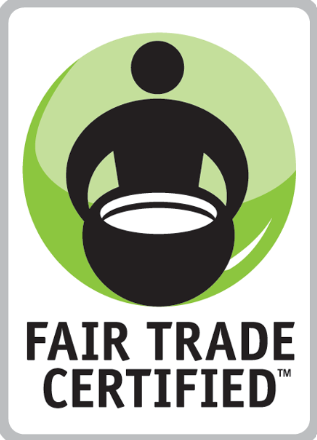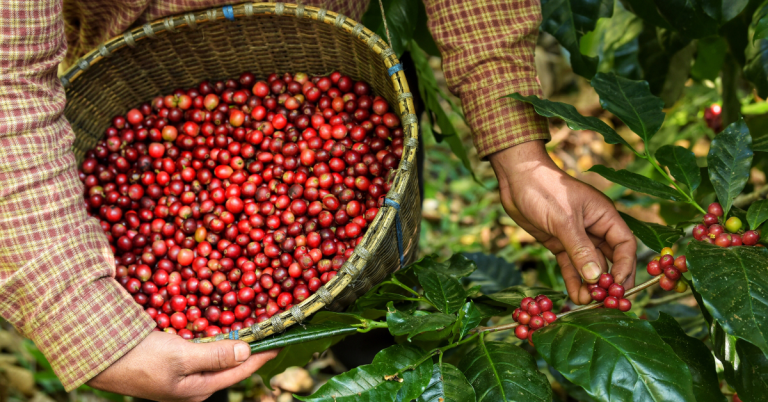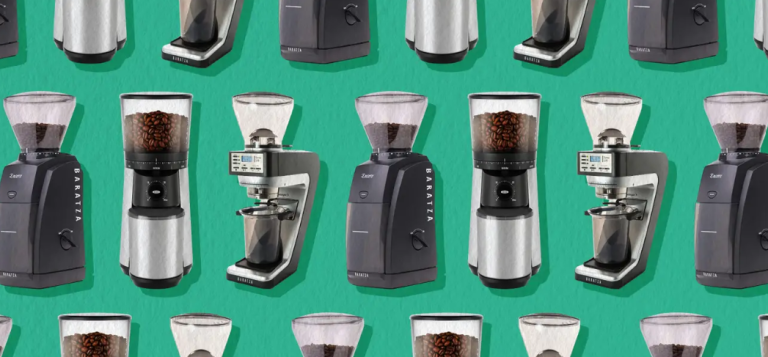Brazilian Coffee Beans: A Complete Guide to Flavor, Regions, and Best Brews in 2025
Did you know Brazil produces over one-third of the world’s coffee? That’s right! From the smooth sweetness of Cerrado to the nutty depth of Sul de Minas, Brazilian coffee beans are the backbone of the global coffee industry.
In this guide, I’ll take you on a journey through Brazil’s legendary coffee-growing regions, uncover the unique flavor profiles, and help you find the perfect roast for your next cup. Whether you’re a seasoned barista or a casual sipper, you’re about to understand why Brazilian coffee deserves a spot in your brew bar.
Why Brazilian Coffee Beans Dominate the Market
Brazil is the largest coffee producer in the world, and it’s been leading the charge for over 150 years! In fact, Brazil produces about one-third of all the coffee consumed globally, making it a key player in the world’s coffee industry. Whether you enjoy your cup black, with milk, or as a creamy espresso, there’s a good chance that coffee started its journey in Brazil.
The History of Brazilian Coffee
Coffee was first introduced to Brazil in the early 1800s, but it wasn’t until the mid-1800s that the country became a major player in coffee production. At first, Brazil grew coffee mainly to export to Europe, where coffee was becoming a popular drink. Over time, Brazilian coffee became known for its smooth, mild flavor and the large amount of beans it could produce, making it affordable for people all around the world.
Consistency and Scalability of Brazilian Coffee Farming
One of the reasons Brazilian coffee dominates the market is consistency. The country has developed efficient farming practices that allow for large quantities of coffee to be produced year after year. Brazil has vast coffee plantations, especially in regions like Minas Gerais and São Paulo, where the climate and soil conditions are perfect for growing coffee beans. This means farmers can meet the ever-growing demand for coffee, making Brazilian beans an easy and reliable choice for coffee lovers worldwide.
Arabica vs. Robusta: Brazil’s Focus
When it comes to coffee types, Arabica and Robusta are the two big players. Brazil is famous for its Arabica beans, which are known for their smooth and mild flavor. These beans are what you typically find in most coffee shops or packaged coffee you buy at the store.
|
Comparison Table |
Arabica |
Robusta |
|---|---|---|
|
Rating
| ||
|
Pricing
|
$10 – $40 per lb |
$3 – $10 per lb |
|
Smooth
| ||
|
Bitter
| ||
|
More Expensive
| ||
|
More Affordable
| ||
|
Found in high-end specialty coffee, espressos, and blends
| ||
|
Often used in instant coffee and espresso blends
| ||
|
High Acidity
| ||
|
Low Acidity
|
Robusta beans, on the other hand, tend to have a stronger, sometimes more bitter taste, and are often used in instant coffee. While Brazil does produce Robusta beans, it’s mostly Arabica that fills coffee cups around the world. Arabica beans are more expensive to produce, but Brazil’s large farms and great farming practices help keep the costs down and the beans available in huge quantities.
Top Coffee-Growing Regions in Brazil
Brazil is known for its amazing coffee, and the country has several key regions that produce some of the best beans in the world. Let’s explore the top coffee-growing regions in Brazil and what makes each one special!
Minas Gerais: Sul de Minas, Cerrado, Chapada
Minas Gerais is one of Brazil’s most important coffee regions. It’s known for producing high-quality Arabica beans. Within Minas Gerais, you’ll find three major coffee-growing areas:
- Sul de Minas: This region is famous for its smooth, well-balanced coffee. The beans here are often sweet, with hints of chocolate and nutty flavors. It’s a favorite among coffee drinkers who like a medium roast.
- Cerrado: Cerrado has a unique climate and high altitudes, which help the coffee beans develop a richer flavor. Beans from this area are often known for their full-bodied taste and mild acidity, with notes of caramel and a smooth finish.
- Chapada: Located at a higher altitude, Chapada produces coffee with a brighter acidity and a clean, crisp taste. The beans are great for those who enjoy a light or medium roast with floral or fruity notes.
São Paulo: Mogiana Region Highlights
São Paulo is another top coffee-producing state in Brazil, and its Mogiana region is particularly well-known. This area has a mix of flat and hilly terrain, making it ideal for coffee farming. The coffee from Mogiana is rich and smooth, with a balanced flavor profile. You can often taste notes of chocolate, nuts, and sometimes even a hint of fruitiness. This region is famous for producing both high-quality Arabica beans and consistent harvests.
Bahia: High-Altitude Specialty Beans
Bahia, located in the northeastern part of Brazil, is another top coffee-growing region. What makes Bahia unique is its high-altitude farming. Coffee grown at higher elevations tends to have a more complex flavor profile, and Bahia is no exception! The beans from this region are known for their specialty coffee qualities, often with fruity, floral, and even wine-like notes. These beans are often sought after by coffee lovers who enjoy unique and complex flavors in their brew.
Espírito Santo: Home of Robusta (Conilon) Production
While Brazil is mostly known for its Arabica coffee, the state of Espírito Santo is home to a significant amount of Robusta coffee (also known locally as Conilon). Robusta beans are known for their strong, bold flavor and higher caffeine content compared to Arabica. The coffee from Espírito Santo tends to have a rich, earthy taste with a bit of bitterness. This makes it a popular choice for espresso blends or instant coffee, as it gives the coffee a stronger kick. The region is also seeing a rise in quality Robusta production, with a focus on improving flavor profiles and sustainable farming practices.
Flavor Profiles of Brazilian Coffee
Brazilian coffee beans are known for their rich and smooth flavors. When you take a sip, you might notice a few common tasting notes like chocolatey and nutty flavors. These beans have a delicious balance that makes them perfect for anyone who loves a mellow cup of coffee. One of the things that sets Brazilian coffee apart is its low acidity, meaning it’s not too sharp or tangy—just smooth and easy to drink. Whether you’re new to coffee or a seasoned expert, Brazilian coffee offers a flavor you can enjoy with every cup.
How Terroir Impacts Flavor
Have you ever wondered why some coffees taste different depending on where they come from? That’s where terroir comes into play. Terroir refers to the unique conditions of the environment where the coffee is grown—things like the altitude, soil type, and climate. In Brazil, the country’s diverse geography means that coffee beans grown in different regions can have very distinct flavors. For example, coffee from the higher altitudes in Minas Gerais might have a more fruity flavor, while beans from lower-altitude areas might taste a bit nuttier. The way the land and weather conditions shape the coffee’s flavors is why terroir is so important in understanding coffee.
Differences Between Natural and Pulped Natural Processing
When it comes to how the coffee is processed after it’s picked, there are two main methods used in Brazil: natural processing and pulped natural processing.
- Natural processing is when the beans are dried inside the fruit, which gives the coffee a fruity and sweet taste. This method can result in a bolder, more intense flavor because the beans absorb more of the fruit’s sugars.
- Pulped natural processing is a bit different. Here, the outer fruit layer is removed, but the beans are still dried with some of the fruit pulp left on them. This method creates a coffee that’s a little cleaner than naturally processed beans but still has a nice balance of sweetness and body.
Roast Levels and Their Impact on Brazilian Beans
When it comes to Brazilian coffee, the roast level makes a big difference in how it tastes. Whether you prefer a light, bright cup or a rich, dark brew, the roast level can bring out different flavors in the beans. Here’s a quick look at how each roast affects Brazilian coffee:
Light Roast: Highlighting Nut and Fruit Tones
A light roast brings out the natural flavors of the coffee, especially the nutty and fruity notes. You might taste hints of almond, hazelnut, or even citrus, depending on the region the coffee comes from. Light roasted Brazilian beans are perfect if you want a coffee that’s bright, flavorful, and refreshing. It’s like taking a sip of something light and sweet, perfect for morning pick-me-ups!
Medium Roast: Balanced Body with Chocolate Notes
A medium roast offers the best of both worlds—it’s balanced and smooth, with a nice body and a gentle sweetness. When it comes to Brazilian beans, this roast often brings out chocolatey flavors, like milk chocolate or cocoa. The result is a rich but mellow cup that’s not too heavy and not too light. It’s great for those who enjoy a coffee that feels full but isn’t overpowering.
Dark Roast: Bold, Bitter-Sweet Flavor and Heavy Body
If you love strong, bold coffee, a dark roast is for you. This roast has a deeper, richer flavor with a bitter-sweet taste that can remind you of dark chocolate or even caramelized sugar. The beans take on a heavy, full-bodied feel, making dark roasts ideal for those who like their coffee with a little more intensity. Brazilian beans roasted dark often have a smoky flavor that pairs perfectly with after-dinner moments or a cozy afternoon.
Best Brewing Methods for Brazilian Coffee
When it comes to brewing Brazilian coffee, there are a few methods you can use to bring out the best in these flavorful beans. Whether you love a smooth cup with lots of clarity or a bold, rich brew, there’s a method for everyone.
Pour-Over for Clarity and Nuance
If you’re looking for a clean, smooth cup of coffee, the pour-over method is perfect. This technique lets the coffee filter drip through slowly, which results in a cup that’s clear and full of bright, delicious flavors. Pour-over brings out the best in Brazilian coffee, especially if you like tasting the nutty or chocolatey notes in the beans.
Here’s a simple way to do it:
- Use a medium grind for the beans.
- Slowly pour hot water (around 200°F) over the coffee grounds in small circles.
- Let the coffee drip through the filter, and enjoy the rich flavors that shine through!
French Press for Body and Texture
If you want a coffee with more body and a thicker texture, the French press is your go-to method. This brewing technique allows the oils from the beans to stay in the coffee, giving it a rich and full taste. Brazilian coffee, especially from regions like Cerrado or Sul de Minas, really shines with this method because it brings out the nutty and chocolate flavors.
To brew with a French press:
- Coarse grind your beans.
- Add hot water (about 200°F) to the press and stir the coffee grounds.
- Let it steep for 4-5 minutes before pressing down the plunger slowly.
Espresso and Cold Brew Applications
For those who enjoy a more intense coffee experience, espresso and cold brew are great choices.
Espresso uses pressure to extract a concentrated shot of coffee, bringing out the rich, bold flavors of Brazilian beans. It’s perfect for a quick, energizing cup or to add to your favorite coffee drinks like lattes or cappuccinos.
If you prefer something less hot, cold brew is another fantastic method. It’s made by steeping coarsely ground coffee in cold water for 12-24 hours. Brazilian beans, especially the sweeter varieties, work really well in cold brew because the long brewing process brings out the smooth, natural sweetness of the coffee without the bitterness.
Grind Size and Water Temperature Tips
No matter which brewing method you choose, the grind size and water temperature matter a lot. For pour-over and French press, you’ll want a medium to coarse grind to avoid over-extraction or too much bitterness. For espresso, a fine grind is key to getting that concentrated, flavorful shot.
Water temperature is just as important. Aim for about 200°F (just below boiling) for most methods. Too hot, and you’ll burn the coffee; too cold, and it might taste weak or under-extracted.
How to Choose the Best Brazilian Coffee Beans
Picking the right Brazilian coffee beans doesn’t have to be confusing. You just need to know what to look for on the bag and where to find the good stuff.
What to Look for on Labels
When you pick up a bag of coffee, check the label for three things:
- Origin – This tells you where the coffee comes from. Look for names like “Cerrado,” “Sul de Minas,” or “Mogiana.” These are top coffee-growing regions in Brazil and are known for great flavor.
- Altitude – Higher altitude usually means better quality beans. If it says something like “grown at 1,000 meters,” that’s a good sign.
- Process – You’ll see words like “natural,” “washed,” or “pulped natural.” These describe how the beans were prepared. Natural processing usually gives the coffee a fruitier taste, while washed beans are cleaner and lighter.
Single-Origin vs. Blends
- Single-origin means the beans come from one farm or region. These coffees often have unique, bold flavors and are great if you want to taste something special.
- Blends mix beans from different places. They’re usually smooth, balanced, and good for everyday coffee drinking.
Neither is better than the other—it just depends on which flavor you like best.
Certifications to Look For
Some labels also have certifications like:
- Rainforest Alliance – Helps protect the environment and farmers.
- Organic – Grown without chemicals or synthetic stuff.
- Fair Trade – Supports better wages and working conditions for farmers.
Of course these don’t change the flavor, but they do help you support good causes when you buy your coffee if you are into that.

Rainforest Alliance
Rainforest Alliance on a coffee bag means the beans were grown sustainably, with care for the environment and fair treatment of workers.

USDA Organic
“USDA Organic” means the coffee was grown without synthetic chemicals or GMOs, using eco-friendly, natural farming methods.

Fair Trade
Fair Trade means farmers were paid fairly and treated ethically, supporting better lives and sustainable practices.
Where to Buy
- Online – Websites like Amazon, specialty roasters, or even the farm’s own site are great places to find high-quality Brazilian coffee. Look for reviews and details about the beans before buying.
- In-store – Grocery stores may carry decent options, but if you want something special, try a local coffee shop or specialty store. They often carry better beans and can help you pick one based on your taste.
Conclusion
Brazilian coffee beans are more than just abundant—they’re versatile, flavorful, and accessible. Whether you crave a bold espresso or a smooth morning brew, Brazil’s diverse regions and rich coffee heritage offer something for every palate.
Ready to brew better? Try a bag of single-origin Brazilian beans and taste the difference yourself.
☕ Drop a comment below and let me know your favorite roast or region!
Questions About Brazilian Coffee Beans ? We Have Answers.
Get answers to a list of the most Frequently Asked Questions about coffee beans from Brazil.


